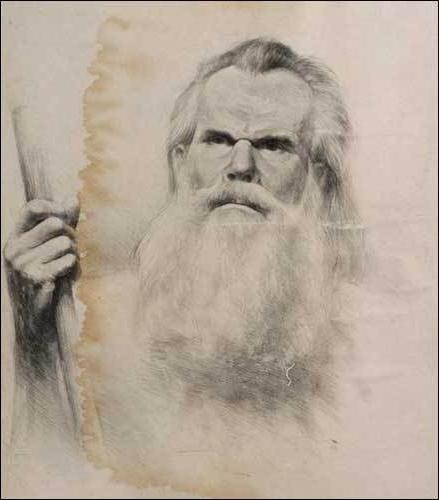Students of secondary and higher art educational institutions know firsthand what academic drawing is, because it is usually included in the curriculum. This is a completely separate type of drawing, which can be attributed to educational. Experienced painters also apply it in their works, but as a draft, preparing for a larger and more responsible picture.
Do not think that it’s easy to draw, here you need to show all your skills, show the art of sketching, transfer the volume on a plane. Academic
pencil drawing is usually done
, but exceptions are possible. For example, sometimes a master chooses material such as sepia, coal or sanguine. It is more difficult to draw with them than with a pencil, since all these materials require skill and skill. In addition, in the case of sketching the wrong strokes, it is already impossible to erase the coal.
Academic drawing is done on white or tinted paper. In the first case, the sheet is considered the lightest shade, and the saturated tone of the pencil is the darkest. On tinted paper, light crayons are used to give a glare pattern. Varying the tones from lightest to darkest depends on the skill of the artist and the ability to use materials.
Depending on the setting, several types are distinguished into which the academic drawing is divided: portrait, figure in clothes or naked, torso, bust, hands, different position of the figure. The sketching of the picture takes place gradually, but not from one corner to another: parts of the picture are depicted simultaneously, simply detailed over time, refined, gaining the desired, more saturated tone.
Academic drawing has several stages. First of all, the artist must make a sketch to roughly represent the final result of future work. A quick sketch will help you understand how to position the sheet, choose the right proportions, direction of movement of the sitter, the ratio of the planes, etc. Then you can start sketching to catch the character of the portrait or the movement of the figure, to establish the main proportions, direction.
The next step is to build planes, volumes, shapes, perspectives. In order to faithfully portray a person, you must have knowledge of the anatomy of the body, know the direction and location of the muscles. You also need to depict the planes in which the figure is located. The last, final, step is hatching. Here, the artist must not only choose the right tone, but also the direction of the stroke, its appearance and thickness. Hatching allows you to depict objects closer or further, in a horizontal or vertical position, to form a shadow and light.

The academic drawing is included in the curriculum of many art institutions, because it allows the student to learn to quickly and clearly convey on paper the smallest details of the sitter, his character, posture, movement. If a person can pose for several hours, which allows him to study in detail, then animals or birds need to be drawn very quickly. This technique of drawing develops the imagination and ingenuity of the artist, teaches the use of various materials.